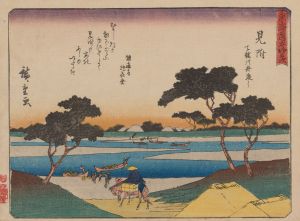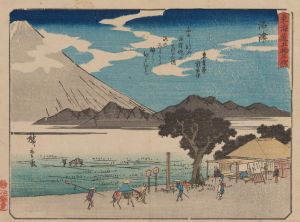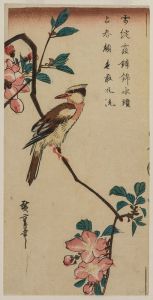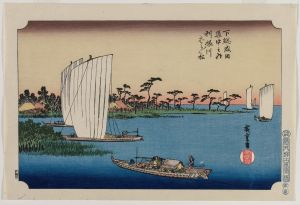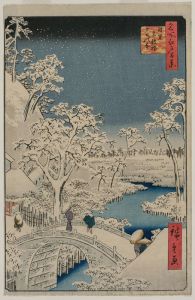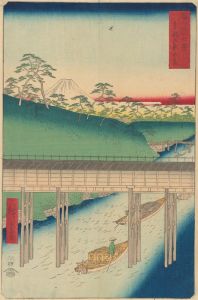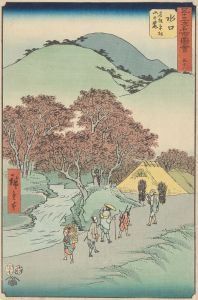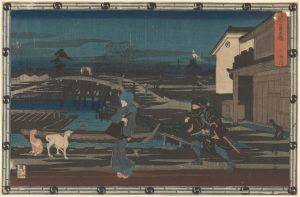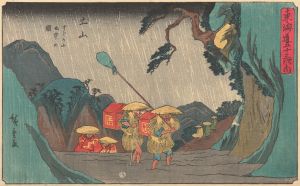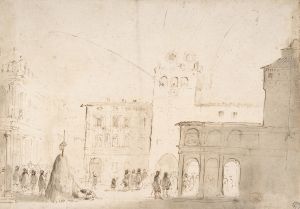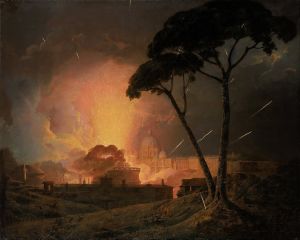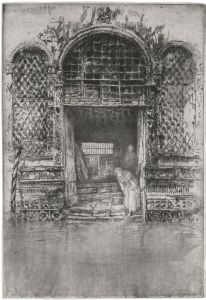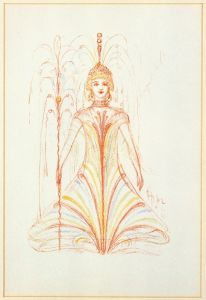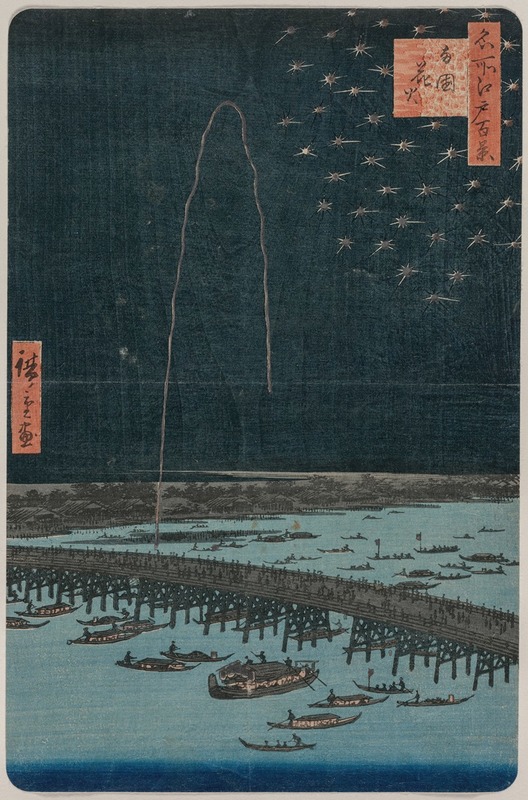
Fireworks at Ryōgoku, from the series One Hundred Views of Famous Places in Edo
A hand-painted replica of Andō Hiroshige’s masterpiece Fireworks at Ryōgoku, from the series One Hundred Views of Famous Places in Edo, meticulously crafted by professional artists to capture the true essence of the original. Each piece is created with museum-quality canvas and rare mineral pigments, carefully painted by experienced artists with delicate brushstrokes and rich, layered colors to perfectly recreate the texture of the original artwork. Unlike machine-printed reproductions, this hand-painted version brings the painting to life, infused with the artist’s emotions and skill in every stroke. Whether for personal collection or home decoration, it instantly elevates the artistic atmosphere of any space.
"Fireworks at Ryōgoku" is a celebrated woodblock print by the renowned Japanese ukiyo-e artist Andō Hiroshige. This artwork is part of Hiroshige's acclaimed series "One Hundred Views of Famous Places in Edo" (Meisho Edo Hyakkei), which was published between 1856 and 1858. The series is a quintessential example of Hiroshige's ability to capture the beauty and essence of Edo, now modern-day Tokyo, through his masterful use of color, composition, and perspective.
The print "Fireworks at Ryōgoku" specifically depicts a vibrant summer scene along the Sumida River in Edo. Ryōgoku was a popular entertainment district known for its lively atmosphere, especially during the summer months when fireworks displays were a common attraction. These displays were not only a form of entertainment but also a cultural event that drew large crowds to the riverbanks.
In the composition, Hiroshige skillfully portrays the dynamic interplay of light and shadow. The fireworks illuminate the night sky, casting reflections on the water below. The river is bustling with boats filled with spectators, capturing the festive spirit of the occasion. Hiroshige's use of perspective invites the viewer into the scene, providing a sense of immediacy and presence.
Hiroshige's work is characterized by its attention to detail and the ability to convey the transient beauty of nature and urban life. In "Fireworks at Ryōgoku," he employs a vertical format, which was somewhat innovative for landscape prints at the time. This choice enhances the dramatic effect of the fireworks bursting in the sky and allows for a detailed depiction of the crowd and boats below.
The "One Hundred Views of Famous Places in Edo" series is significant in the history of Japanese art for its comprehensive portrayal of Edo during the late Edo period. Hiroshige's prints were not only artistic achievements but also valuable historical records of the city's landscapes, architecture, and daily life. His work influenced many Western artists, including the Impressionists, who admired his use of color and composition.
Hiroshige's prints, including "Fireworks at Ryōgoku," were produced using the traditional ukiyo-e woodblock printing technique. This involved carving the image into a wooden block, applying ink, and pressing it onto paper. The process required collaboration between the artist, carvers, printers, and publishers, each contributing to the final product.
Today, "Fireworks at Ryōgoku" is celebrated for its artistic merit and historical significance. It remains a popular subject of study for those interested in Japanese art and culture. Hiroshige's ability to capture the ephemeral beauty of Edo's landscapes continues to resonate with audiences, offering a glimpse into the past while showcasing the timeless appeal of his work.





